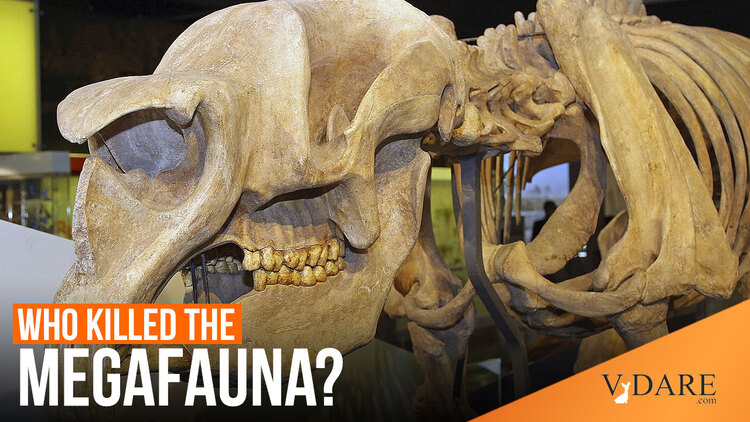
Why Did Megafauna Mostly Go Extinct In The New World, Somewhat In Eurasia, And Less So In Africa
11/10/2023
There’s an interesting debate at Marginal Revolution over the patterns of extinction of big game around the world as humans show up over the last 100,000 years.
Here’s my super-stylized (i.e., not terribly well-informed) model:
- Africa was at one extreme. Humans largely evolved there, so megafauna coevolved alongside us to not trust humans and to evolve defenses against our human wiles. So, more megafauna survived there into recent times, which can have deleterious economic consequences: a herd of African elephants can eat an African village’s entire crop in a day. So, if people are too thin on the ground in an area to drive off elephant herds, they may have to abandon a region to the elephants and retreat to somewhere with more people.
- Eurasia was in the middle, the sweet spot: New, eventually improved versions of people would occasionally arrive from Africa and get an advantage over the local megafauna for a while. Slowly, people converted Eurasia to a place in which the megafauna weren’t as powerful as in Africa and humans usually had the upper hand. But the process wasn’t precipitous or too complete. Thus, there a lot of megafauna still around when people finally came up with the idea of domestication (e.g., there were no more woolly mammoths left, but there were still horses, fortunately).
- The New World and other remote places such as islands like New Zealand and Mauritius had the most precipitous extinctions of big beasts. Humans would arrive with lots of hunting skills, e.g., they’d been making a living hunting woolly mammoths in Siberia, so they hunted woolly mammoths in North America. The poor woolly mammoths of North America, who had seen few if any human hunters before, were quickly overwhelmed by the scary tough guys from Siberia. Unfortunately, the proto-Indians ate all the horses and camels before they came up with the idea of domesticating them. So, as Jared Diamond noted, in 1492, the New World was short on domesticated megafauna relative to the Old World. Similarly, it’s unfortunate that all the 500-pound moas on New Zealand and dodos on Mauritius got eaten by newcomers over the last 1,000 years before anybody got around to domesticating them.
That’s my best guess. Maybe something else like a newly introduced disease wiped out the local megafauna. It’s also possible that climate change, perhaps induced by newcomer humans setting wildfires, whether accidentally for their own use or intentionally to alter the ecosystem, had large consequences for megafauna extinctions. But my best guess is: the Indians ate them.
